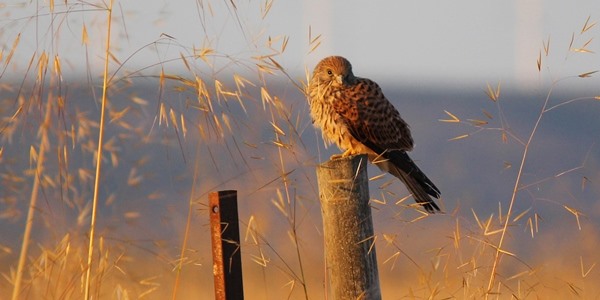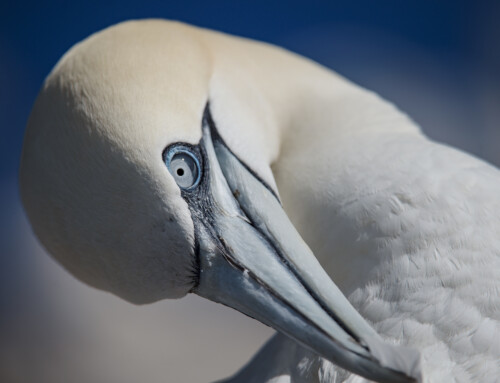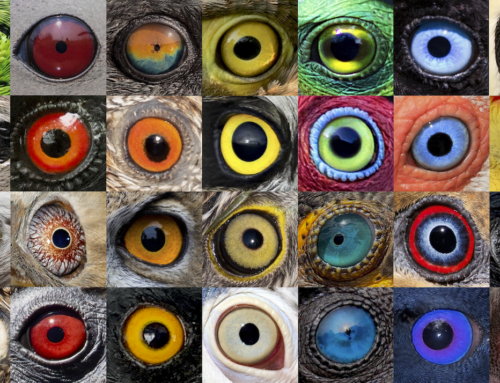Darker nestlings display bolder personalities, but only if they are female
LINKED PAPER
Plumage colouration and personality in early‐life: sexual differences in signalling. López‐Idiáquez, D., Fargallo, J.A., López‐Rull, I. & Martínez‐Padilla, J. 2018. IBIS. DOI: 10.1111/ibi.12665. VIEW
Colouration in birds
Birds are perhaps the most colourful and conspicuous vertebrates in the animal kingdom. Avian colouration arises through two main mechanisms, the deposition of pigments in structures, such as feathers, or by the interaction of the feather structure with light. The latter is responsible of the colourations most commonly seen in birds, like the red combs present in the Red Grouse (Lagopus lagopus scoticus) or the black bibs of the House Sparrows (Passer domesticus). The former generates less common colourations, like the iridescent colours of the Magpies (Pica pica) or colourations that go unnoticed to the human eye, like the UV reflectance in the blue crowns of Blue Tits (Cyanistes caeruelus).
The roles of colouration
Most of the time, these flashy traits play an important role transmitting information about different aspects of their bearers, such as their health, breeding status or body condition. Many studies have described how those individuals that display brighter colourations are able to enhance their reproductive success, by mating with high quality individuals or their capacity to mate with a greater number of mates. However, colour traits can also work in non-reproductive contexts. When competing for limited resources, like food or nesting sites, individuals showing bigger or more colourful traits usually have a higher probability to access those resources. This happens because these traits may signal the competitive ability or dominance of those individuals, working as badges of status.
Melanin based traits and individual personality
One of the most common types of pigmentation responsible from the traits that work as badges of status is melanin-based colouration, generating black, grey, brown and red-brown colours. The prominent role of melanin as a signal of dominance is a result of the combined effects of the hormone testosterone, that modulates both the synthesis of melanin and also aggressive behaviours. Furthermore, the expression of melanin-based traits is associated with personality. Personality can be described as the between-individual differences in the response to certain stimuli that are consistent in time and context. One of the most common ways of measuring personality is through the shy-bold axis. At end of this axis, we find shy individuals characterized for behaving in a timid way, having a lower propensity to take risks in challenging situations. On the other end of the axis, we find bold individuals that have more daring behaviours and a higher propensity to take risks. The importance of personality has been stressed by its association with the fitness of the individuals and their transmission from one generation to the next. However, the great majority of studies exploring both the importance of melanin-based colouration and personality has been focused on adults and their role in juvenile individuals has been overlooked.
The role of juvenile colouration
There are two classic ideas put forward to explain the function of coloured traits in juveniles. In addition to crypsis, their main role has been thought to signal subordination in order to reduce aggressive encounters by adults. Still, the role of juvenile colouration within a communication context is rather unclear. Recent ideas defend that juvenile colouration could be working as a signal of dominance within the juvenile age-class or within a parent-offspring context, informing about their quality to the parents. Both perspectives suggest that juvenile colouration can be a channel to communicate different aspects of the bearers within and between age classes, like quality or dominance.
What we wanted to test
In the Common Kestrel (Falco tinnunculus), there is notable variation in plumage colouration in offspring, both within and between sexes. Interestingly, this variability may inform about survival prospects to adulthood, with darker nestlings having enhanced probabilities to survive to the next year. In addition, there also are differences in offspring behaviours, linked to personality traits. Within this context, our aim was to test the association between personality and melanin-based colouration in Common Kestrel nestlings.
How we did it, and what we found
To answer our question, during the years 2015 and 2016 we estimated the personality (shy-bold axis) and the expression of melanin-based traits in 148 Common Kestrel nestlings in the Campo Azálvaro region (central Spain; Fig. 1). We found a sex-dependent association of boldness and melanin-based colouration. Our results showed that female, but not male, nestlings exhibiting darker colourations displayed bolder personalities.

The association between boldness and plumage blackness suggests that plumage colouration in juveniles could be working as a badge of status. We suggest that individuals with darker plumages will have improved access to limited resources.
The sex-dependent association suggests that these traits are under different selection pressures in males and females. This may be caused by the different role of colouration in adulthood, as colouration works as a sexual ornament in adult males but not adult females. According to this idea, the directional female preference will generate males displaying more extreme phenotypes that will promote a greater detachment of plumage colouration and other traits.
Take home message
The results of this work emphasize the role of juvenile colouration as a social signal, showing that it can play roles different to those classically assumed, like signalling subordination to adults or crypsis. In addition, our results also suggest that plumage colouration is under different selection pressures in males and females during the first stages of life, which certainly merits further investigations.
References
Fargallo, J.A., Velando, A., López-Rull, I., Gañán, N., Lifshitz, N., Wakamatsu, K. & Torres, R. 2014. Sex-specific phenotypic integration: endocrine profiles, coloration, and behavior in fledgling boobies. Behavioral Ecology 25: 76–87. VIEW
Hill, G.E. & McGraw, K.J. 2006. Bird Coloration: Function and Evolution (GE Hill and KJ McGraw, Eds.). Hardvard University Press.
López-Idiáquez, D., Vergara, P., Fargallo, J.A. & Martínez-Padilla, J. 2016. Female plumage coloration signals status to conspecifics. Animal Behaviour 121: 101–106. VIEW
López-Rull, I., Vergara, P., Martinez-Padilla, J. & Fargallo, J.A. 2016. Early constraints in sexual dimorphism: survival benefits of feminized phenotypes. Journal of Evolutionary Biology 29: 231–240. VIEW
Moreno, J. & Soler, J.J. 2011. Sources of distinctness of juvenile plumage in Western Palearctic passerines. Biological Journal of the Linnean Society 102: 440–454. VIEW
Réale, D., Dingemanse, N.J., Kazem, A.J.N. & Wright, J. 2010. Evolutionary and ecological approaches to the study of personality. Philos. Trans. R. Soc. Lond., B, Biol. Sci. 365: 3937–3946. VIEW
Rohwer, S. 1975. The Social Significance of Avian Winter Plumage Variability. Evolution 29: 593–610. VIEW
van den Brink, V., Henry, I., Wakamatsu, K. & Roulin, A. 2012b. Melanin-Based Coloration in Juvenile Kestrels (Falco tinnunculus) Covaries with Anti-Predatory Personality Traits. Ethology 118: 673–682. VIEW
Image credits
Featured image: Young Common Kestrel, Falco tinnunculus © David López-Idiáquez
Blog posts express the views of the individual author(s) and not those of the BOU.
If you want to write about your research in #theBOUblog, then please see here.





